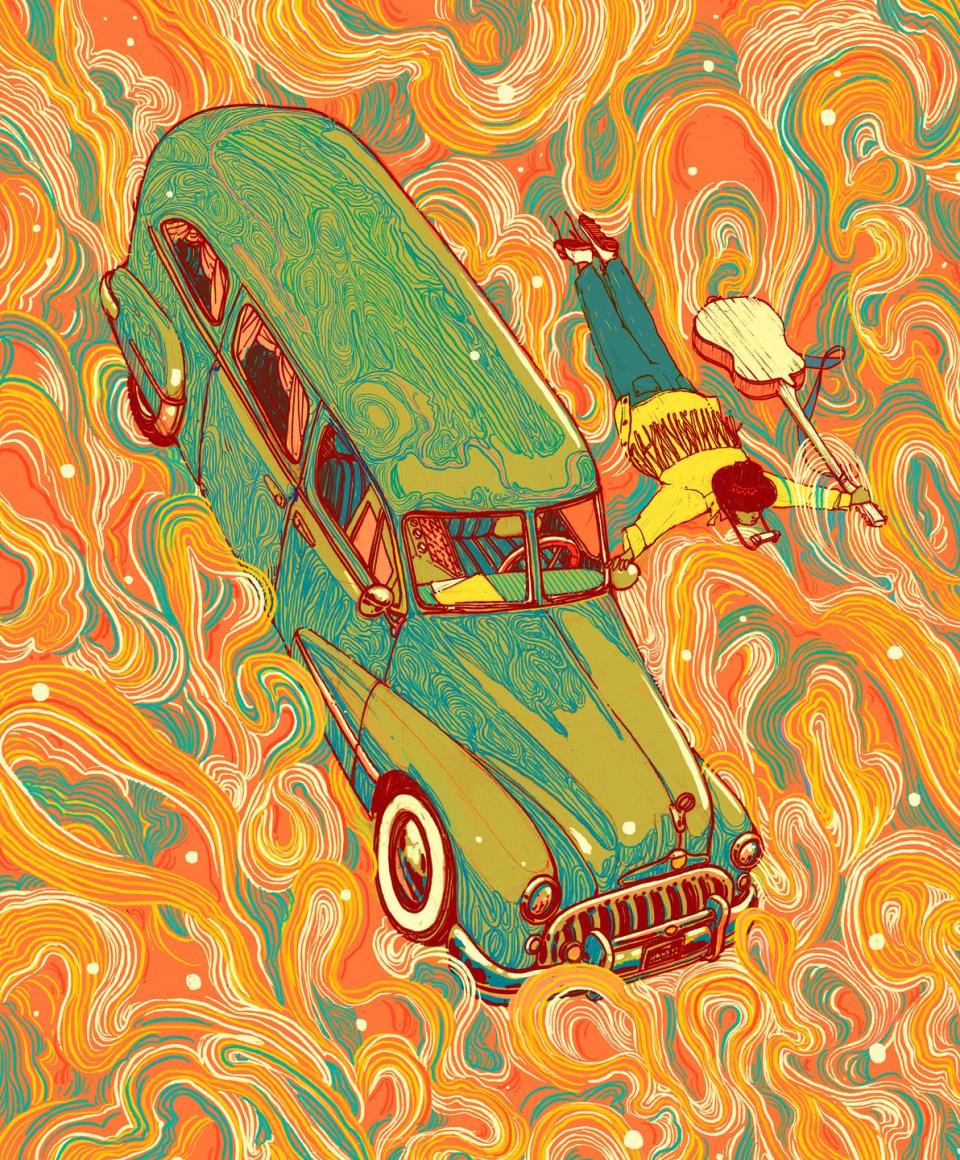Nobody Loves a Hearse Like Neil Young


Neil Young published a 500-page autobiography in 2012 and another of almost 400 pages two years later because he realized he hadn’t talked about cars enough. He rarely has a negative word to say about the dozens and dozens he has owned, most of them clunkers, except for the finicky and overcomplicated Citroën SM (nickname: the Contrarian) he admits he was just too stoned to drive. He talks to cars. They talk to him. For years, his favorite thing to do was smoke a joint and float along through the redwoods in a big old cruiser, imagining he was back in the year when the car was made.
This story originally appeared in Volume 15 of Road & Track.
There are likely few people, outside of Eisenhower-era funeral-home directors, who’ve driven as many midcentury hearses. Young has owned four: a Buick, a Pontiac, a Packard, and then another Buick. Two of them, both named Mortimer Hearseburg (One and Two), played decisive roles his life. The last one may still yet.
Young wrote the ballad “Long May You Run” not about a female acquaintance, but for the first Mort. It’s by no means Young’s best or most loved song, but it is among his most lovable—sappy, funny, touched with genuine loss.
Young’s mother loaned him $150 for the used hearse after he dropped out of high school. He’d been a sickly kid, a difficult and distant adolescent, and then a charismatic but volatile young man. Crowds terrified him. The thought of going to the supermarket crippled him with anxiety. He describes his moods as unpredictable, coming and going like the weather. Over and over again, when he got scared or nervous, he would slip away. It became a habit, never showing up, disappearing. No one could figure him out, least of all himself.
Mort quickly became part of his identity: “It was like this weird thing—The Band and The Car.” Guys in the band had to lie down in the back, 200 miles to a gig, “like a dead man.” They couldn’t sit up straight. When Mort died, Young took it hard. Without a car, he wasn’t sure who he was anymore. Roy with no Trigger.
So he bought another hearse, Mort Two, a 1953 Pontiac, and drove to L.A. to become a rock star. He left Ontario without telling anyone. “The great Canadian Dream is to get out,” he once told Rolling Stone. He didn’t like that his friend drove Mort rough. “I’d be laying in the back of the hearse trying to sleep, but listening instead obsessively to the transmission.”
One day, his future bandmate and best friend and nemesis, Stephen Stills, noticed a hearse at an L.A. stoplight. They’d met by chance the year before, in Canada. “As soon as he saw the Ontario plates, he knew it was me. So they stopped us. I was happy to see fucking anybody I knew.”
Thus began one of the most consequential musical partnerships of his life—and one of the most vexing. They loved playing together. But not much else. They were like “chalk and cheese,” said Linda McCartney. A decade later, “Long May You Run” was the title track on a tuneful but lackluster collection he and Stills salvaged from an acrimoniously disrupted CSNY session. Partway through the subsequent tour, Young pulled another one of his disappearing acts. At least this time he was thoughtful enough to send a telegram. “Dear Stephen,” it read, “funny how some things that start spontaneously end that way. Eat a peach, Neil.”
Since then, there have been dozens if not hundreds of cars in Young’s life. He collects them for their uniqueness, with little concern for their condition. He once bought a 1950 Packard Clipper that barely ran. He liked the hood ornament. “Moves like that made me start to wonder,” he wrote. Elsewhere, he’s wondered whether this car thing is a disease. If it is, it doesn’t trouble him.
Along the way, another hearse came into the collection, an unnamed 1948 Buick Roadmaster, exactly like Mort One. Though Young has downsized the collection in recent years, he couldn’t part with it. But it needs work. “If there is ever a situation where the hearse is required again, I want it to be ready,” he wrote, “yet I am somehow slow in preparing, not wanting to be too ready.”
You Might Also Like

 Yahoo Autos
Yahoo Autos 